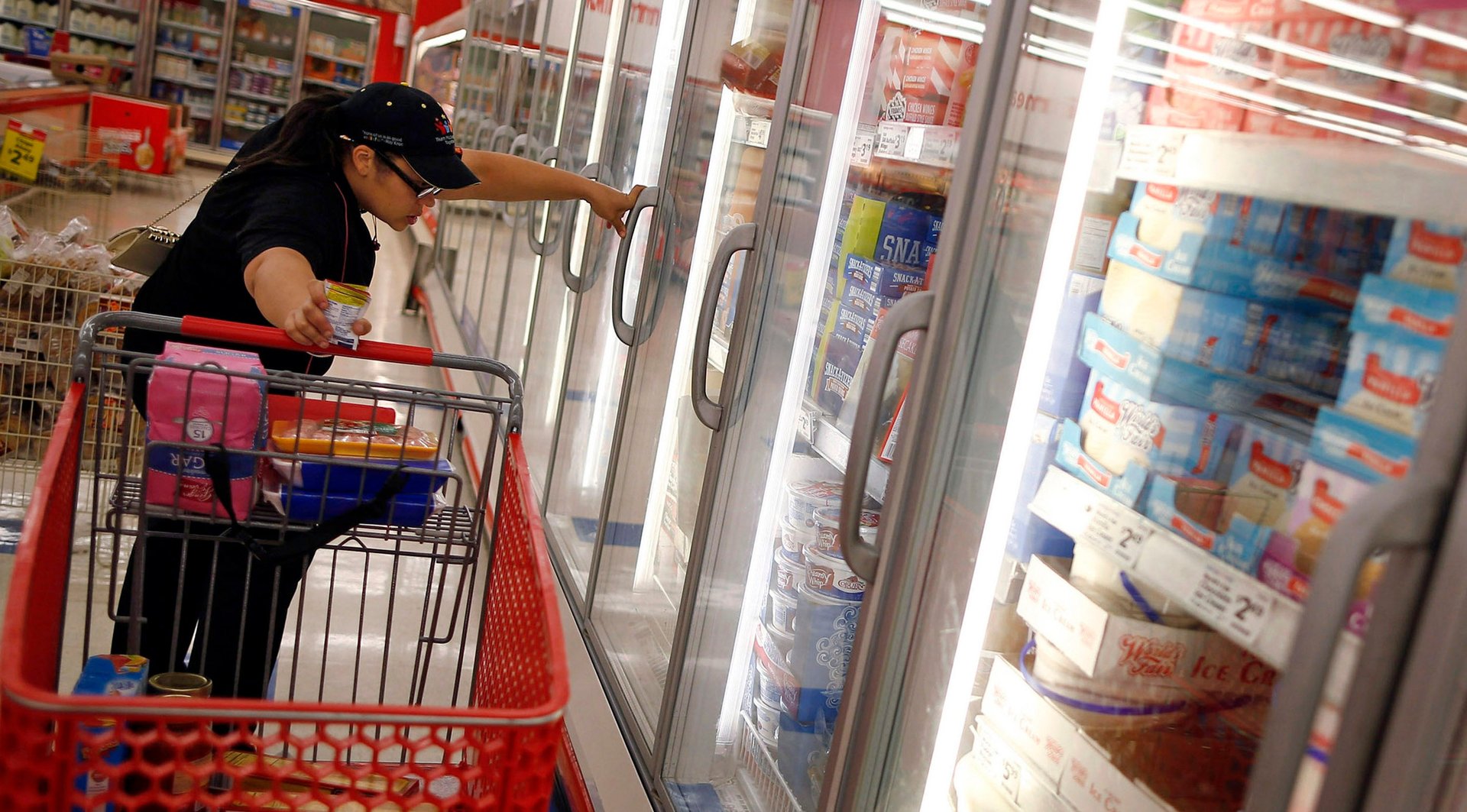Every American should have to live for a week on a food budget of just $29
Recently, a certain high-profile celebrity tweeted out a photo of her groceries. That tweet generated a fairly typical outpouring of snark and negative reaction on social media, but it also sparked a more useful conversation about hunger in America.


Recently, a certain high-profile celebrity tweeted out a photo of her groceries. That tweet generated a fairly typical outpouring of snark and negative reaction on social media, but it also sparked a more useful conversation about hunger in America.
The caption attached to the photo explained that US actress Gwyneth Paltrow was documenting what she could buy with the United States’ average weekly food stamp benefit: $29 for an individual.
[protected-iframe id=”d49e68b46225408d201aa661d03fd4ae-39587363-80614903″ info=”//platform.twitter.com/widgets.js” class=”twitter-tweet”]
Food stamps in the United States are provided through SNAP, the Supplemental Nutrition Assistance Program. It is an incredibly important program for the health and well-being of economically vulnerable Americans. Considered to be the nation’s first line of defense against hunger, SNAP delivers timely and targeted food assistance to people faced with hard times.
Indeed, SNAP’s strengths are many—reducing hunger and poverty, improving nutrition and health—but its biggest weakness is its low benefit level. Quite simply, it isn’t enough to get people through the month, let alone allow them to purchase healthy food for that time. Typically, healthier foods like fresh produce cost more. And when people have few funds dedicated to groceries, they often find their dollars go further when purchasing calories rather than nutrients.
SNAP benefits are too low because they are based on an outdated plan that was created for emergency diets. But this could be fixed. Congress could update this calculation and give people more adequate benefits.
There is recent evidence of the positive impact of higher benefits. In 2009, at the height of economic recession in the United States, SNAP benefits were temporarily increased by 13.6% as part of the stimulus provisions included in the American Recovery and Reinvestment Act (ARRA). Research on the ARRA boost and benefit adequacy showed improved well-being and health.
For example:
- A 2011 report by the US Department of Agriculture’s Economic Research Service looked at data from late 2008 (before passage of the American Recovery and Reinvestment Act) to late 2009 (post-ARRA) and found that food insecurity decreased among low-income households in that time.
- A different 2011 report, this one from Children’s HealthWatch, meanwhile found a measurable impact on children’s health. Two years after the ARRA increase went into effect, children in families receiving SNAP were more likely to be classified as “well” (meaning they were in good health and developing normally) than young children whose families were eligible for but did not receive SNAP.
Unfortunately, this benefit increase was phased out, and families again are left with benefits that are too low.
It can be hard for people with enough food to eat to understand what it feels like to not have a consistent source of nutritious meals. But it is for precisely this reason that the SNAP Challenge exists: participants spend one week eating on $29, and document their purchases and meals, to show others what it’s like.
Of course, the challenge does not come close to the experiences of low-income families struggling week after week and month after month, but it does give a glimpse of what it means to live on such a limited budget—to see the choices that one must make in navigating the grocery store and trying to purchase enough food to last the week.
The challenge is intended to spark conversation and awareness. Awareness that millions of Americans—one in six, according to the non-profit Food research and Action Center’s latest food hardship report—struggle to afford enough food. Awareness that there is a solution and that benefits should be increased. Awareness that in the midst of this conversation, Congress is considering harming people further through cuts to SNAP that would lower benefits. This is precisely the wrong direction.
It is up to us to keep the conversation on track by pointing out the inadequacy of benefits and by urging Congress to look at ways to end hunger, rather than doubling down on the problem. Doing this is much easier that we think. People can add their voice to a petition in support of SNAP, they can contact their members of Congress, and they can share these facts to urge even more people to speak out on behalf of this work.